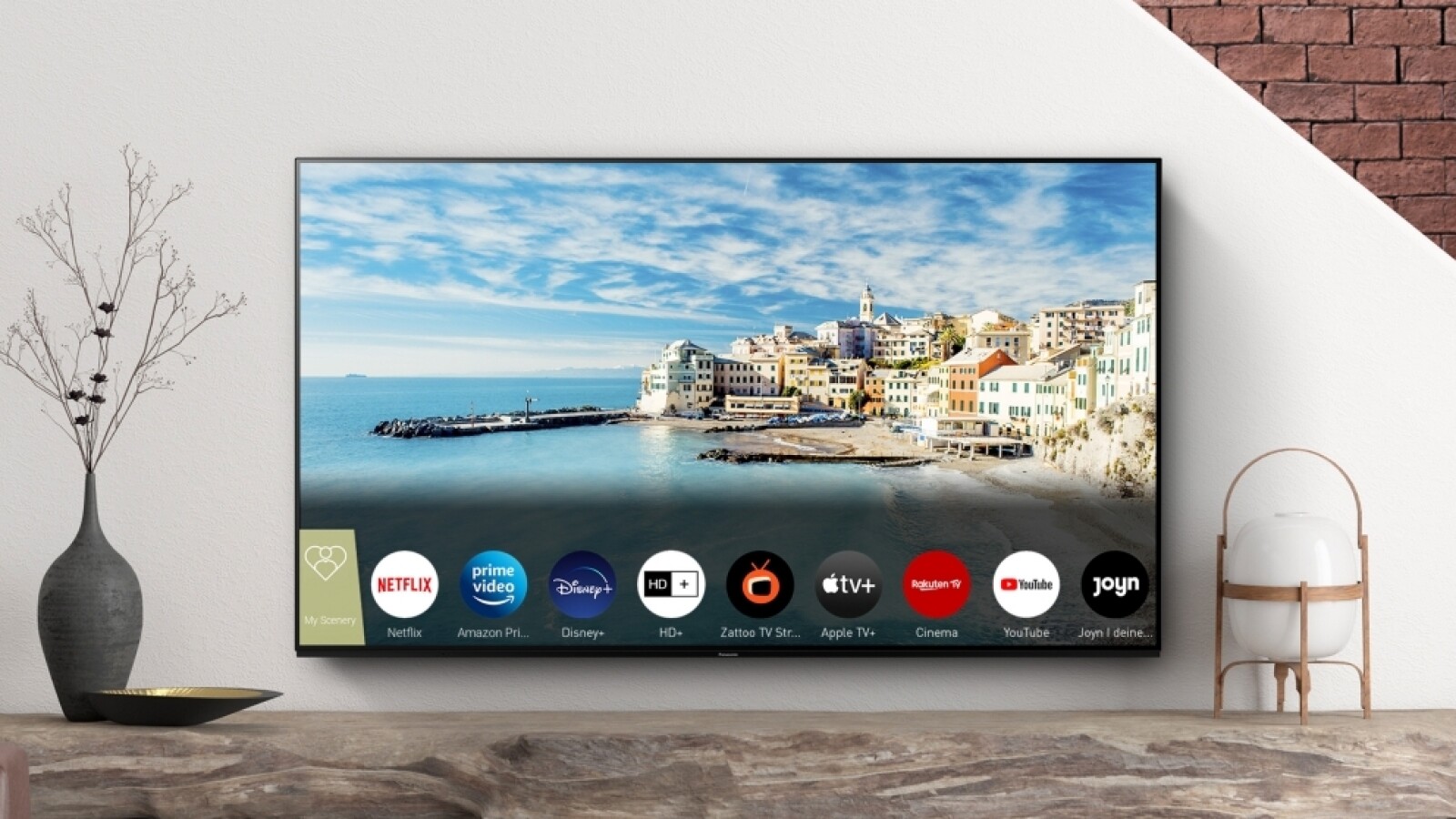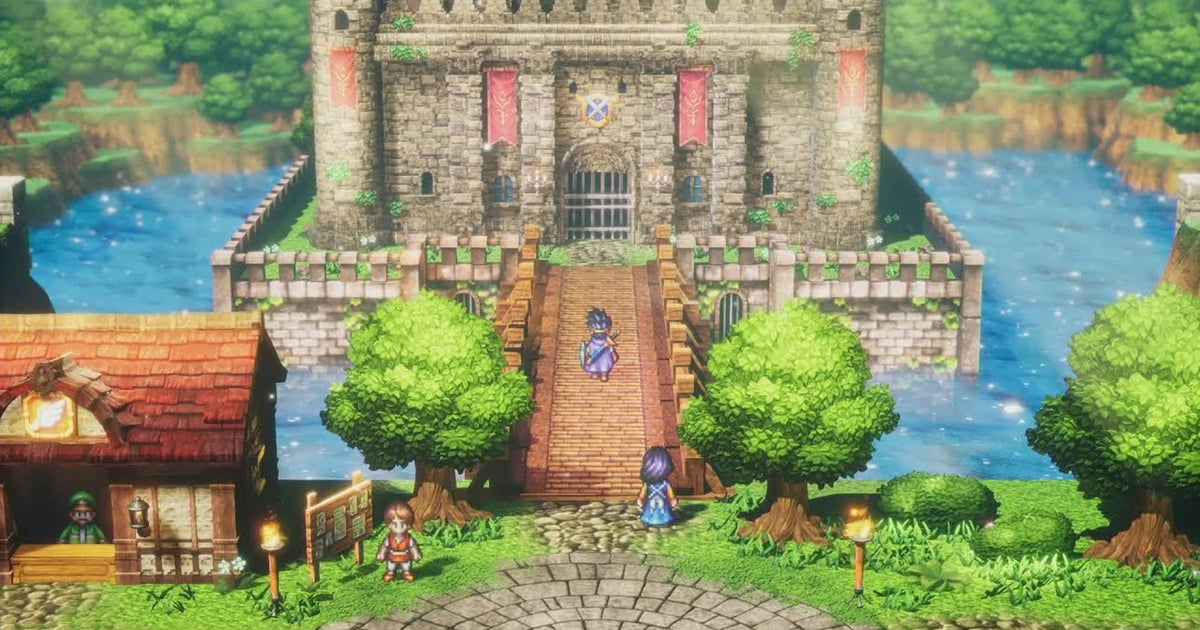“Panasonic My Home Screen” is a smart TV system just like Android TV or Tizen, but with some special functions. Do the benefits justify switching to a Panasonic TV?

With “My Home Screen”, Panasonic mainly equips high-class and some mid-range televisions. (Source: Panasonic)
Your parents and maybe even your grandparents will surely know Panasonic televisions, after all, the Japanese manufacturer has been selling television sets for many decades. It all started with black and white televisions, today Panasonic sells modern smart TVs just like other TV manufacturers.
Thanks to the Internet connection, they offer a whole range of special functions, but they also require their own operating system. Panasonic equips some of its own mid-range devices with the cross-manufacturer Android TV system, but Panasonic’s specially developed “Panasnoic My Home Screen” operating system is mostly used for the rest and for high-class models.
Was ist “Panasonic My Home Screen”?
So if you have a high-end Panasonic television, it is very likely that it has “Panasonic My Home Screen”. This not only runs the many smart functions of your television, it also provides the technical framework and the content that you can enjoy on your smart TV. In this article we will explain the most important advantages, special features and functions of the system to you.
Panasonic advertises the operating system with the full name “Panasonic My Home Screen”. For reasons of readability, we refer to the system below as “My Home Screen”.
It is not uncommon for TV manufacturers to equip their televisions, at least in part, with their own operating system. Samsung handles it like this with Tizen, LG handles it like this with the specially produced webOS system. “My Home Screen” probably has most parallels to Android TV, but it is special in many areas.

Panasonic’s “My Home Screen” TV operating system is visually reminiscent of Android TV or webOS. (Source: Panasonic)
And just like webOS, “My Home Screen” has also been getting a major version update every year for some time now. However, Panasonic only ever equips newly produced devices with this. So you get the latest version of the operating system, “My Home Screen” 8.0 only on Smart TVs that were produced from 2023. Older televisions, on the other hand, usually still use the previous versions “My Home Screen” 7.0 and 6.0.
Each of these versions has slight differences and improvements, as you will learn more about in the course of this article. Nevertheless, in this article we want to focus primarily on version 6.0, which is installed on many devices built in 2021 and 2022.
A look at the home screen of your Panasonic TV
If you turn on your smart TV and are not watching the live program, you will find yourself in the start menu of “My Home Screen”. Version 6.0 is structured similarly to earlier versions of LG’s webOS: a menu bar with access to the most important areas, apps and functions is displayed above the image. The main menu button takes you to a separate start menu if you want to access additional content and areas.
You can customize the main menu just like the start menu bar, so you can access the most important apps and content faster. You can pin the apps, for example, by pressing the option button on your television in the main menu. In principle, this is also possible with many other operating systems such as Tizen, but Panasonic offers you even more freedom here.
So you can not only pin apps and content, but also quick access for HDMI inputs to switch directly to connected devices such as game consoles or Blu-ray players or quick access for your connected USB storage drive to play recorded content. With a little time, you can put together a particularly convenient user menu.
You can sort and rearrange all of this content as you wish, so you can always adapt “My Home Screen” to your current preferences. Thanks to the fast-reacting interface, this is also quite quick.
App selection in “My Home Screen” solid
For many, the apps are the most important thing on their own Smart TV. Panasonic comes with a few pre-installed apps, including those for the most important and well-known streaming services, such as Netflix or Disney+. Of course, you can always download additional apps to your device. At “My Home Screen” you go to the Panasonic app market.
Panasonic also relies on its own app store. However, the range here is smaller than that of competitors such as Samsung (Tizen), Android TV or Google TV (both Google Play Store). But if you mainly want to install apps for streaming services on your Smart TV anyway, the selection is always big enough. In addition to the apps for Netflix and Disney+, those for Amazon Prime Video, DAZN, Rakuten TV, Joyn, Zattoo and of course YouTube are also available free of charge. In order to use the individual services, you may need a paid subscription.

The selection of apps on “My Home Screen” is not huge, but it is completely sufficient if you primarily use the most well-known streaming services. (Source: Panasonic)
In addition, you will also find many other more and less useful apps in the Panasonic App Market. This includes some gaming apps or smaller service applications, such as screen savers or music offers. On the other hand, you have to do without apps for Spotify, Tidal, Wow or Twitch. Compared to the competition, some important apps are missing.
However, Panasonic’s own app store suffers from a major problem: a lack of overview. The Google Play Store and even the smaller LG Content Store offer a much clearer listing of available content, and the search function is also implemented much better in the competition. If you are looking for a specific app, you usually have to invest time in the search.
However, the system compensates for this small disadvantage with another advantage that many competing TV operating systems lack. On the next page you will find out what this is all about.
Don’t miss anything with the NETWORK-Newsletter
Every Friday: The most informative and entertaining summary from the world of technology!







